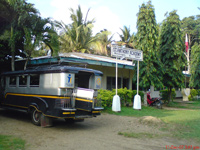This is the executive summary of the project. You can also view the analysis of the project's success using KPA tools.
 As a small private high school for the poor in Mondragon, Northern Samar, the Saint Anthony’s Academy (SAA) receives an annual subsidy under the Education Service Contracting (ESC) scheme of the government. Perennially delayed remittances, however, caused serious cash shortages for the school. The PEF project, then, created a bridge fund where the school could withdraw cash while waiting for the ESC remittance and replenish this fund when the ESC subsidy arrives.
As a small private high school for the poor in Mondragon, Northern Samar, the Saint Anthony’s Academy (SAA) receives an annual subsidy under the Education Service Contracting (ESC) scheme of the government. Perennially delayed remittances, however, caused serious cash shortages for the school. The PEF project, then, created a bridge fund where the school could withdraw cash while waiting for the ESC remittance and replenish this fund when the ESC subsidy arrives.
The effects of releasing the administration and teachers from financial worries through the bridge fund were extensive. School administration and teachers directly attribute increased enrollment, lower dropout rates, more extracurricular activities, better student and teacher performance, more community participation and other positive outcomes to the creation of the bridge fund.
Describing the project from the “knowledge for poverty alleviation” perspective, the SAA has been using the ESC Law, a stakeholder capital, in making quality education accessible to the poor. However, the constant delay in remittances created a liability. By establishing a bridge fund through the PEF grant, the human and other kinds of capital latent in the school were released to enhance and/or create other types of capital. The administration and teachers’ dedication, skills and experience (human capital) were used to promote enrollment, reduce the dropout rate and improve curriculum and extra-curricular activities resulting in better education for the students (human capital). SHIFT/SAA tapped its network of contacts (structural capital), goodwill and good relations with the community (social capital) to mobilize support for the school.
The project builds on three types of capital/assets for the school’s economic sustainability, namely: (a) the ESC Law, a structural capital (b) a bridge fund for education provided by the grant, a financial capital, and (c) fund-raising activities for special projects from the local community, national and international groups and individuals, a combination of human, structural and social capital.
